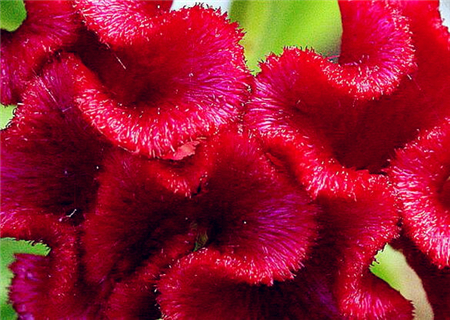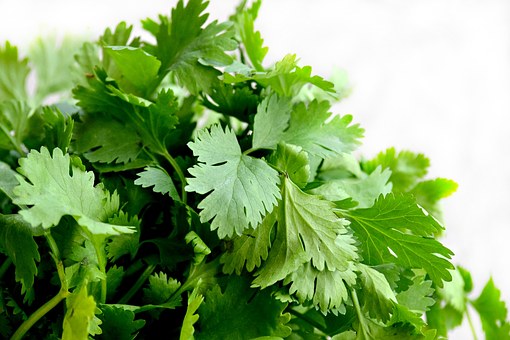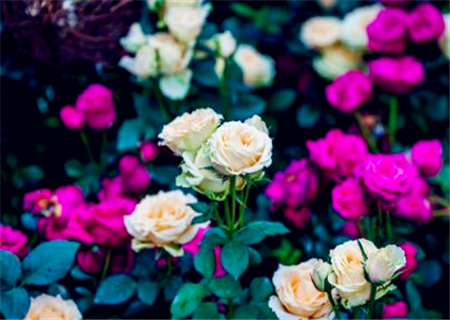When will the cockscomb blossom? When is the best time to sow seeds?
Cockscomb flowers like adequate sunshine, hot and humid, not resistant to frost, not resistant to barren. Widely cultivated everywhere, ordinary garden plants. In addition, it has high medicinal value. So when will the cockscomb bloom? When is the best time to sow seeds? The details are as follows:

When does the cockscomb blossom
Celosia cristata is an annual herb with variable spikes at the tip of the stem or at the end of branches, often in the shape of a cockscomb with purple, red, reddish, yellow or miscellaneous colors. The utricle is transversely split when it is hot, with 2 to several small black seeds in it. The flowering period of cockscomb is usually from July to September. The fruit period is from September to October. Therefore, the flowering period of cockscomb is in summer every year.
The sowing and propagation of cockscomb is best carried out from April to May, and the temperature is better when the temperature is 20-25 degrees. Before sowing, you can apply some cake fertilizer or stable manure or compost as base fertilizer in the seedbed. Sowing should be in the seeds and into some fine soil for sowing, because the cockscomb seeds are small, cover the soil 2-3 mm, should not be deep. Before sowing, the soil in the seedbed should be kept moist. After sowing, a little water can be sprayed with a fine-eye spray can, and then shade the seedbed. Do not water it for two weeks. Generally, the seedlings can emerge in 7-10 days, and when the seedlings grow 3-4 true leaves, the seedlings can be planted once, and some weak and over-dense seedlings can be pulled out. When the seedlings are 5-6 cm high, they should be transplanted and planted with root soil.
1. Seed breeding method, selecting plots during Qingming Festival (because outside, preferably after frost-free), applying sufficient basic fertilizer, ploughing fine rakes evenly, leveling the border, spreading seeds evenly on the border surface, slightly covering the seeds with fine soil, watering thoroughly, and keeping the land moist; generally, when the temperature is 15 degrees, seedlings can emerge in 15 days.
2. After sowing in summer in Grain in Beard, the seeds are sown according to the row spacing of 30 cm. When the seedling height is 6 cm, the seedlings are 20 cm apart. The seedlings below can be transferred to other fields, and must be watered after transfer. Weeding and loosening the soil must be done at the seedling stage, and when it is not too dry, water as little as possible. The seedling is 30 centimeters high and should be fertilized once. After sealing off the old leaves, when blooming and heading, if the weather is dry, water should be properly watered to prevent stagnant water in low-lying areas in the rainy season. After heading, the flower buds between the lower leaves and viscera can be erased to facilitate the growth of the main ear at the top.
3. Of course, it can also be cultivated in the greenhouse, as long as you pay attention to the humidity and temperature, but when planted outside the greenhouse, you must take the seedlings outdoors at night to strengthen the seedlings after they sprout and grow four leaves, so that they can learn to adapt to the cold environment, otherwise they will grow slender and delicate and will soon die.
Planting
The seedlings were planted in 2-4 slices of Changshan in spring. When planting, it should be planted slightly, leaving only cotyledons on the soil surface, and make the potted soil slightly dry to induce the inflorescence to appear as soon as possible. After the inflorescence occurs, change the 16 cm pot. It should be watered thoroughly before turning the pot. if you want to get the extra-large flower head, you can change the 23cm pot and pay attention to the matching of the flowerpot at the same time. Small potted dwarf species, large potted chicken tail crown and other tall species. The dwarf and multi-branched varieties should be coring after planting to promote branching, while erect and branching varieties should not be coring.
2. Light and temperature prefer warmth to cold. During the growing period, there should be enough light, and at least 4 hours of light should be guaranteed every day. The suitable growth temperature is 18-28 ℃. It grows slowly when the temperature is low, and dies after planting in winter.
3. Fertilizing and watering basin soil should be fertile, mixed with half of fertile loam and mature stable fertilizer. It must be properly watered during the growth period, but the basin soil should not be too wet and should be moist and dry. Avoid failing to bloom or blossom late. The application of phosphate fertilizer in the later growth stage and more sunlight can promote the robust growth and large inflorescence. Less fertilizer and water should be irrigated in the seed ripening stage to facilitate the seed ripening and keep the flower color rich for a long time.
Key points of cultivation
Suitable temperature for germination: 20-30 ℃ sowing time: autumn and spring
Suitable temperature for growth: 10-30 ℃ flowering period: whole year
Raising seedlings: seeds are planted in the culture soil to keep the soil moist and germinate in about 6-8 days. After thinning the seedlings, wait for 4-5 leaves to be transplanted, be careful not to break the straight root.
Planting: cultivated soil with good drainage. This plant is heat-resistant and needs sufficient sunshine. The flower bed is 15CM apart. Nutritious fertilizer should be applied at seedling stage and growth stage, such as organic fertilizer, compound fertilizer or flower seed.
Cultivation related
Cockscomb likes sunshine, is resistant to barren, afraid of stagnant water, is not resistant to cold, and grows well in a high-temperature and dry climate. Under normal circumstances, there is no need to water or fertilize. Cockscomb can be used as a potted ornamental flower. Potted plants generally do not need to plant seedlings in pots, but choose to plant cockscomb flowers in the pot at flowering stage. Plant a little deeper when potting, so that the leaves should be close to the surface of the potted soil. Do not scatter when transplanting, water thoroughly after planting, fertilize after 7 days, and apply liquid fertilizer every half a month. Before the inflorescence is formed, the basin soil should be kept dry to facilitate the breeding of inflorescences. After the bud is formed, liquid fertilizer can be applied once every 7-10 days and properly watered.
If you want to make the cockscomb plant stout, the Corolla is fat, thick and colorful, you can change a large pot after the inflorescence is formed, but you should pay attention to the fact that it cannot be scattered when transplanting, because its root is extremely weak, otherwise it is not easy to survive.
Celosia cristata is cross-pollinated, and it is easy to cross and mutate among varieties. Therefore, the flowering period of the remaining varieties should be isolated. When keeping seeds, the seeds in the lower part of the inflorescence should be harvested to retain the characteristics of the variety.
Scientific maintenance
① basin soil: choose fertile, well-drained sandy loam or mixed medium prepared with rotten leaf soil, garden soil and sandy soil at the proportion of 1:4:2.
② pot: in the flowering period, you can directly choose from the ground planting cockscomb on the pot, pay attention to the pot can not be scattered, plant a little deeper, the leaves as close as possible to the basin soil surface.
③ watering: watering thoroughly after planting, and then watering properly. Try not to make the lower leaves stained with sludge when watering.
④ fertilization: thin compound liquid fertilizer should be applied every 10 days after bud formation.
How to make cockscomb beautiful in color
There are many varieties of cockscomb, with three plant types: tall, medium and short; the shapes are cockscomb, torch, cashmere, feather, fan, etc.; the colors of flowers are bright red, orange-yellow, dark red, purple, white, red-yellow and so on; the leaves are dark red, emerald green, yellow-green, red-green and so on, which make them a commonly used flower bed in summer and autumn.
In cultivation, if the management and maintenance is improper, the flowers are often rare and the color is dim, which affects the ornamental value of cockscomb.
In order to make the cockscomb flowers big and colorful, we should pay attention to the cultivation and maintenance:
① is planted in sandy loam with high dry, sunny, fertile and well drained soil.
② should not be watered too much during the growing period. Watering should be controlled after flowering, properly watered in dry weather, and drained in time in cloudy and rainy days.
③ removed all axillary buds from seedling stage.
After the chicken crown was formed, ④ applied thin compound liquid fertilizer every 10 days (2-3 times).
Disease prevention and cure
When root rot occurs in the seedling stage, it can be sowed in the field with quicklime. Small bridge insects are easy to occur during the growing period. Foliar spraying with diluted detergents, dimethoate or pyrethroid pesticides can play a role in prevention and control, reproduction and cultivation.
(1) Ring disease
Main symptoms: there are large brown round disease spots on the periphery of the leaves, and there are obvious concentric wheel lines on the surface of the disease spots, and then the center of the disease spots are grayish brown and scattered with small black spots.
(2) epidemic disease
Main symptoms: the leaf is dark green at the beginning, and then expands. The disease spot is soft rot in high humidity, light brown in low humidity and dry.
(3) spot disease
Main symptoms: the disease spot on the leaf is polygonal or round, 1mm to 5mm in diameter, dark brown on the periphery and light brown in the middle.
(4) blight
Main symptoms: the bacteria mainly infect the root and stem. Disease occurred before emergence, seed buds rotted in the soil, showing lack of seedlings on the ground, disease occurred after emergence, the damaged rhizome showed dark brown, softened, watery, the top of the plant withered in the later stage, and finally withered. When the disease is serious, the leaves in contact with the ground are also easy to produce dark green to brown watery spots, causing leaf rot.
(5) Stem rot
Main symptoms: the disease is mostly harmful to the base of the stem, with yellowish-brown spots at the initial stage, and then gradually enlarged into oval or long spots, with brown edges, central yellow or grayish white, and finally black spots on the spots.
Chemical control
1. Timely spraying and prevention in the early stage of the disease, including Bordeaux solution of 1purl 200, 50% methyl topiramate wettable powder, 50% carbendazim wettable powder 500 times liquid spray, 40% carbendazim suspension 600 times 800 times liquid spray, or watering with Dyson zinc wettable powder 300 times 500 times liquid.
2. In addition to using diluted detergents, modern ways to protect the environment can also plant plants that keep insects away, or put beneficial insects that eat those pests.
Time: 2019-04-10 Click:
- Prev

How much is the parsley seed per jin? What kind of varieties are of high yield? How do you plant it?
Coriander is a common vegetable in daily life, and its special aroma can dispel the fishy smell of meat, so many people like to use it as seasoning, eating raw and so on.
- Next

When does the "British national flower" rose blossom? When is the best time to plant? Profit from planting in greenhouse
Rose originated in China, has a long history of cultivation, is the British national flower, flower words: love, love and beauty, radiant, brave, noble. So when do the roses bloom? When is the best time to plant? What about the profits of planting in the greenhouse? The details are as follows: the rose blossoms in early May.
Related
- Fuxing push coffee new agricultural production and marketing class: lack of small-scale processing plants
- Jujube rice field leisure farm deep ploughing Yilan for five years to create a space for organic food and play
- Nongyu Farm-A trial of organic papaya for brave women with advanced technology
- Four points for attention in the prevention and control of diseases and insect pests of edible fungi
- How to add nutrient solution to Edible Fungi
- Is there any good way to control edible fungus mites?
- Open Inoculation Technology of Edible Fungi
- Is there any clever way to use fertilizer for edible fungus in winter?
- What agents are used to kill the pathogens of edible fungi in the mushroom shed?
- Rapid drying of Edible Fungi

